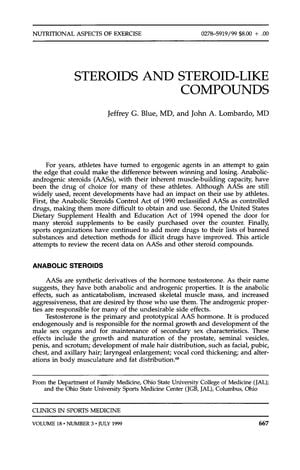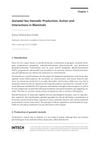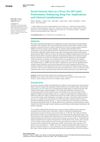Steroids And Steroid-Like Compounds
July 1999
in “
Clinics in Sports Medicine
”

TLDR Athletes use steroids to enhance performance despite health risks and legal issues, and education on their dangers is needed.
The 1999 document reviews the use, effects, and consequences of anabolic-androgenic steroids (AASs). It highlights that despite legal restrictions and health risks, athletes continue to use AASs for their performance-enhancing effects. The document reports that AASs can cause serious health disturbances, including growth and sexual development issues, suppression of pituitary function, and direct testicular effects. It also notes a decrease in adolescent AAS use in the U.S. from 1989 to 1996, with unreliable self-reporting compared to urine assays. The typical adolescent AAS user is engaged in strength training and may lack knowledge about AAS effects. AAS use is linked to body dissatisfaction, social influences, and misinformation. The document also discusses the side effects of AASs, such as cardiovascular risks, liver alterations, musculoskeletal issues, and psychiatric effects like aggression and mood disorders. It emphasizes the need for comprehensive drug prevention programs, education, and specific medical monitoring for AAS users.



